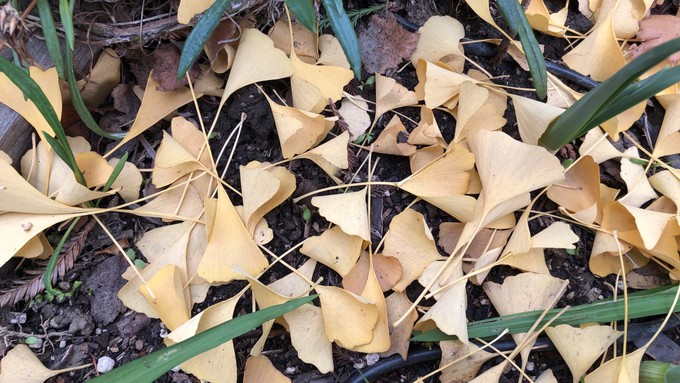
Rainy conditions expected to be followed by cold nights

Cold nights have brought out fall colors. Expect to rake some leaves this week. Kathy Morrison
Get out your rain buckets; it’s time to catch some storm water.
According to the National Weather Service, Sacramento can expect 1 to 1-1/2 inches between Saturday night and Wednesday evening. That’s good news. Even better, that rain will be spread out over several days. That’s the sort of soaking rain our gardens need.
All that cloud cover will keep temperatures cooler than normal for early November. Afternoon highs will be in the low to mid 50s all week, about 10 degrees below average. Overnight lows will stay in the 40s through Wednesday. As skies clear, those lows will dip into the low 30s. Keep frost cloths near.
Keep rakes handy, too. Those colder temperatures will bring out fall colors. But gusty wind and rain will bring a lot of leaves down in a hurry.
What to do between cloudbursts or after the rain:
* Save fall leaves and recycle as mulch. Roughly chop larger leaves with a land mower. Or add leaves to compost.
* If leaves look funky, don’t recycle those problems. Dispose of any diseased plant material. For example, if peach and nectarine trees showed signs of leaf curl this year, clean up under trees and dispose of those leaves instead of composting.
* Save dry stalks and seedpods from poppies and coneflowers for fall bouquets and holiday decorating.
* Give your azaleas, gardenias and camellias a boost with chelated iron.
* After they bloom, chrysanthemums should be trimmed to 6 to 8 inches above the ground. If in pots, keep the mums in their containers until next spring. Then, they can be planted in the ground, if desired, or repotted.
* Prune non-flowering trees and shrubs while dormant.
* Keep planting bulbs to spread out your spring bloom. Some possible suggestions: daffodils, crocuses, hyacinths, tulips, anemones and scillas.
* This is also a good time to seed wildflowers and plant such spring bloomers as sweet pea, sweet alyssum and bachelor buttons.
* Take advantage of softer soil; plant most trees and shrubs. This gives them plenty of time for root development before spring growth. They also benefit from fall and winter rains.
* Set out cool-weather annuals such as pansies and snapdragons.
* Lettuce, cabbage and broccoli also can be planted now.
* Plant garlic and onions.
Comments
0 comments have been posted.Sacramento Digs Gardening to your inbox.
Sites We Like
Garden Checklist for week of July 21
Your garden needs you!
* Keep your vegetable garden watered, mulched and weeded. Water before 8 a.m. to reduce the chance of fungal infection and to conserve moisture.
* Feed vegetable plants bone meal, rock phosphate or other fertilizers high in phosphate to stimulate more blooms and fruiting. (But wait until daily high temperatures drop out of the 100s.)
* Don’t let tomatoes wilt or dry out completely. Give tomatoes a deep watering two to three times a week.
* Harvest vegetables promptly to encourage plants to produce more. Squash especially tends to grow rapidly in hot weather. Keep an eye on zucchini.
* Pinch back chrysanthemums for bushy plants and more flowers in September.
* Remove spent flowers from roses, daylilies and other bloomers as they finish flowering.
* Pinch off blooms from basil so the plant will grow more leaves.
* Cut back lavender after flowering to promote a second bloom.
* It's not too late to add a splash of color. Plant petunias, snapdragons, zinnias and marigolds.
* From seed, plant corn, pumpkins, radishes, winter squash and sunflowers.